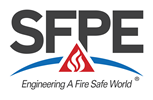FEMTC 2014
Industry Accepted Design: A Case Study on Prescriptive vs. Performance-Based Design Criteria 
Mackenzie Hill - Arup
Abstract
A prescriptive and performance based analysis has been conducted on a College Campus Building in Southern California. The building is proposed to be the center of operations as well as having administration facilities for the College. It will house an administrative office, production and support facilities. The project is three stories and includes a balcony that does not qualify as a story. The top floor is greater than 30 feet from grade and the largest floor has an area of approximately 12,500 square feet. The building is comprised of Group A and B occupancies in a separated mixed-use configuration. The building will be of Type II-B construction.
The prescriptive analysis has been evaluated based on the following systems:
- Egress Components
- Fire Rated Construction
- Fire Alarm System
- Fire Suppression System
The performance based analysis has been conducted for a number of fire scenarios using the following programs:
- Fire Dynamics Simulator (FDS)
- Simulation of Transient Evacuation and Pedestrian movementS (STEPS)
The required safe egress time (RSET) and available safe egress time (ASET) have been calculated and analyzed to determine if the fire and life safety goals have been achieved.
Based upon the performance-based analyses that were conducted for the building, it was evident that the performance-based design criteria applied to the analyses were more stringent than those inherent in the prescriptive design requirements. This paper will address the differences in industry-accepted design criteria for both prescriptive- and performance-based design solutions. Options for rectifying the difference in these criteria will also be presented.
Presentation
Resources
| Paper | Presentation | ||
|---|---|---|---|
| HTML | HTML | ||
| Resources Archive File (.zip) | |||

